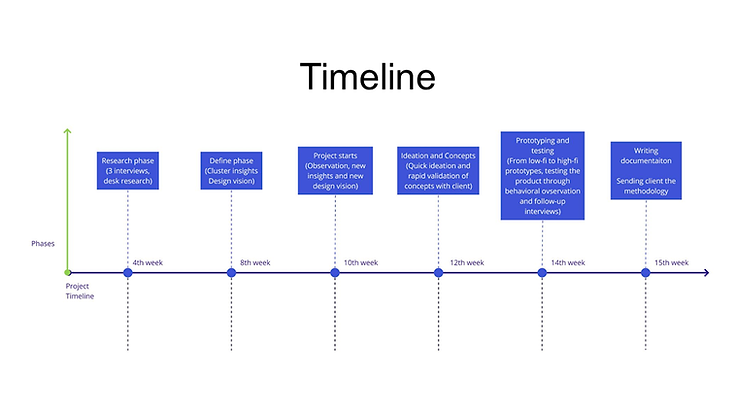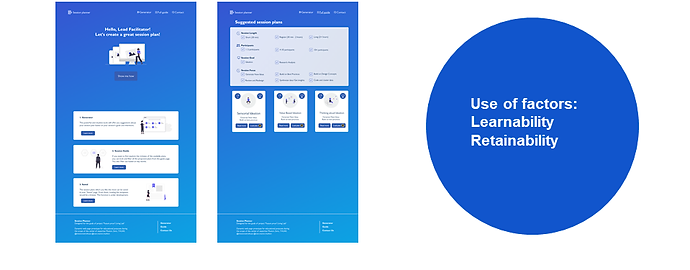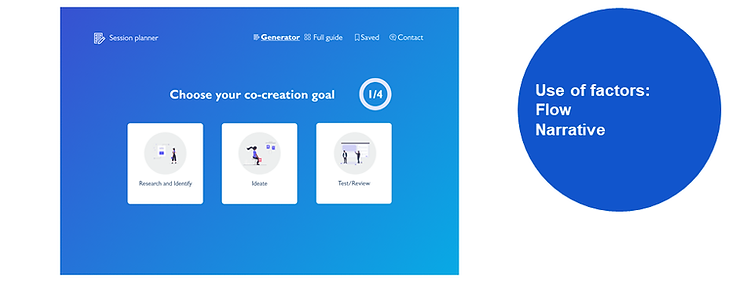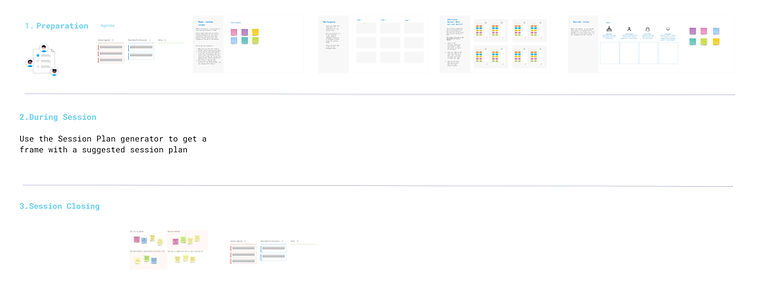Mission Zero Center of Expertise
Project "Future-proof methodology for online collaboration"
Client: "Future-proof Living Lab" research project
The project is expected to start operating soon in collaboration with 4 other labs around the area of South Holland (The Hague, Rotterdam, Delft, Leiden, etc.)
As part of the system of Living Lab projects around the area of South Holland, this project will work towards a zero-emission society and improving the environment of the area.
Design problem:
This group of professionals wants to do co-creation and feedback sessions, and more broadly, be able to exchange knowledge in an easy and safe way. The stakeholders have said that they will have to do the creative process online (at least until summer entirely online) and with changing numbers of people, they would like to have a platform/methodology to do this. So their problem is creative and effective online collaboration, knowledge sharing, and co-creation.
Working methodology:
The methodology for this project was chosen to be "waterfall". I chose this method because I thought it would be a suitable style for duration of 15 weeks for this project. I also wanted to experiment with this method and to see its flaws and how it will have an effect on my work and the timeline of the project.

1. Research
The research for this project was done by carrying out 3 ethnographic interviews and 1 behavioral observation with the stakeholders and potential partners of the project.
The user insights were then drawn from the data of these interviews and observation to make product requirements and user stories that would be used to make additional requirements for the methodology
Observation of the behavior of the participants in a session and the level of engagement throughout the session:
Green line indicates the session's level of engagement (current situation)
Yellow line indicates the potential level of engagement with the new methodology
2. Define phase
In the Define phase, user stories, product requirements, and user portraits were created to put in detailed context what the project should aim at achieving during the Ideation phase. The design vision of the project was also outlined in this phase which showed the must-have features of the project.
User portraits of the 2 main user groups for the project:
3. Ideation and Design Concepts phase
Quick ideation was carried for each of the 6 features of the methodology. Each feature went through a double diamond design process structure. Some of the used methods for diverging the ideas were braindumping, brain writing and co-creation with stakeholders whereas a SCAMPER method (adapt and modify) was used to converge and further detail the most promising ideas.
The most promising ideas for each ideation were then matched in a couple of combined concepts that each showed a design direction holistic project methodology. The main stakeholder then chose the most promising design direction for the project methodology. The design direction was formed into a design concept for the project methodology in which were outlined the flow and relatedness between the features of methodology.
The main features of this concept were three which contribute to a different part of on online session:
Session plan generator - a platform generates a session for the facilitator to use depending on his preferences when preparing for the session
Session structure template - shows the selected session plan as a template in Miro which can be easily edited and shared by the facilitator. It also offers a framework and a digital environment that participants could use to better during the session
Facilitator's manual - a document that could help the facilitator during a session when he doesn't feel experienced enough to solve all potential problems that the participants might have during the session
4. Prototyping and testing phases
This phase involved rapid prototyping for each of these features by going from sketches and low-fidelity prototypes to high-fidelity prototypes. Between the usability tests for each of the features, it was decided to create a fourth feature - a methodology guide that would inform the user how to use the methodology and giving tips and tricks to newcomers for the users.
Some usability testing was also carried to validate the methodology in relation to the client's goals. The testing was done through a behavioral observation of a project session where some of the proposed features were used by the project's stakeholders and partners and 2 follow-up interviews with both user groups of the methodology.
When prototyping each of the separate UX Factors for the design of the features of the methodology, some UX factors were chosen that best fit the intended goal of the feature and would improve the user journey of these features.
Factors of usability:
Efficiency of time and effort by the users of the methodology
Learnability of features
Retainability of features
Factors of engagement:
Flow between session activities
Narrative between the features of the methodology
Factors of meaningfulness:
Relatedness between participants during and after a session
Self-exploration when ideating during a session
5. Project Results
After positive feedback from the testing phase, the final deliverables for each feature of the methodology had minor changes, and the methodology was then finalized and send to the client.
Proof of concept:
With the new methodology, the session is more structured and engaging for the facilitator and the participants. Below is a visual comparison of a session's level of engagement without using the methodology (left picture) and with using the designed methodology (right picture)
The Green line represents the level of engagement in participants during an observed session based on qualitative metrics (how active they were, how involved were they in the ideation process, and how engaging was the session atmosphere) as well as quantitative metrics like the number of clarifying questions asked and the overall time management of the session.
Methodology Guide:
The methodology guide was an informative document that shows how all the features of the methodology relate to each other in the methodology flow and it also offers useful tips and tricks for participants about how to use the suggested platforms and which tools would be most suitable for different parts of the session.
Session plan Generator:
Pages from the designed platform with the relevant UX factors applied to them.
Home page and overview page of the platform
Generator function of the platform
Link to high-fidelity prototype (Figma)
Session structure templates in Miro:
Template for session preparation by the participants
Template of one of the suggested session plans
Suggested activities that can be done during the session break
and the tools to help with choosing a suitable one
Facilitator's manual:
Link to Microsoft Sway file with the document
Project Deliverable:
Visual overview of the methodology (pdf)

















.png)